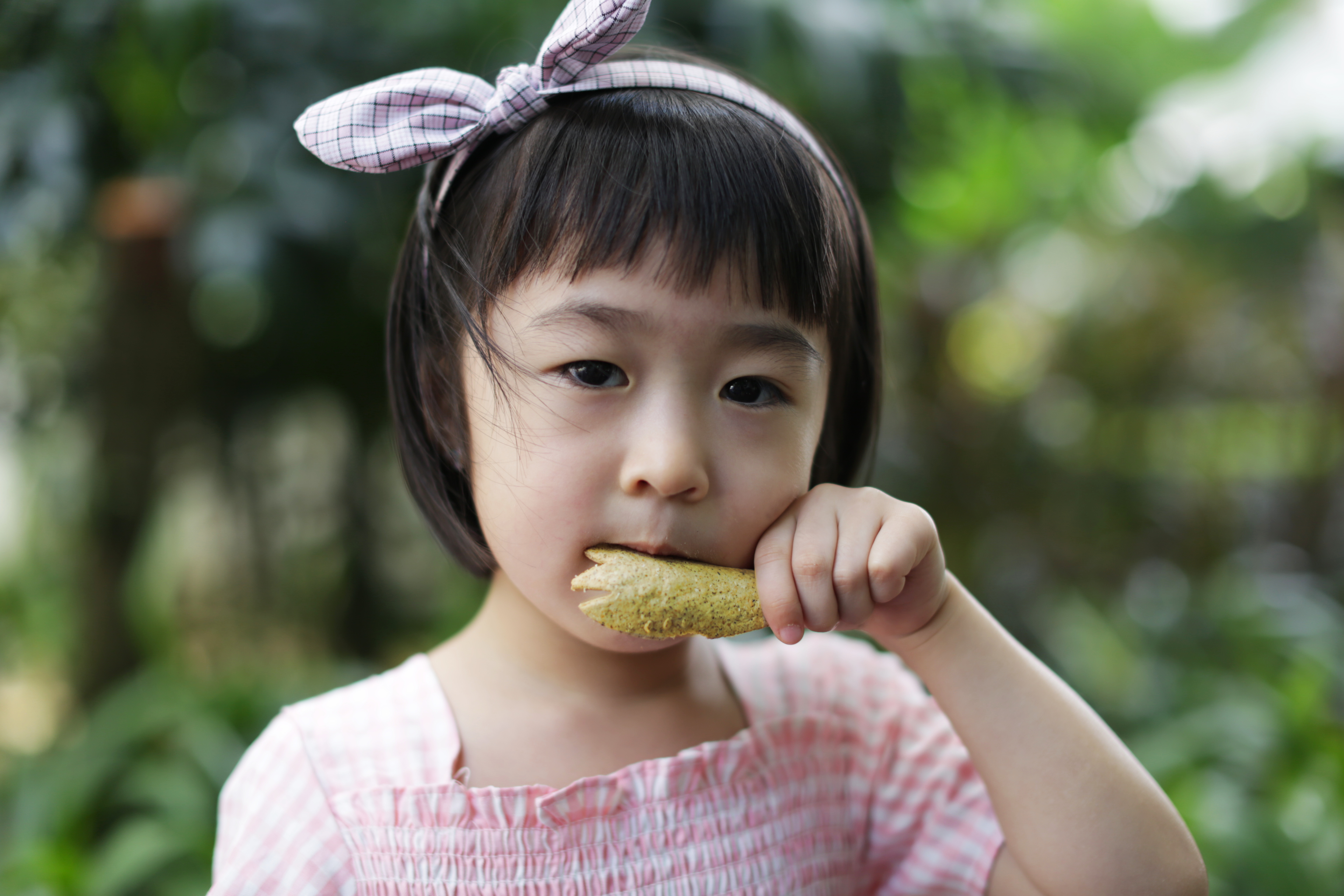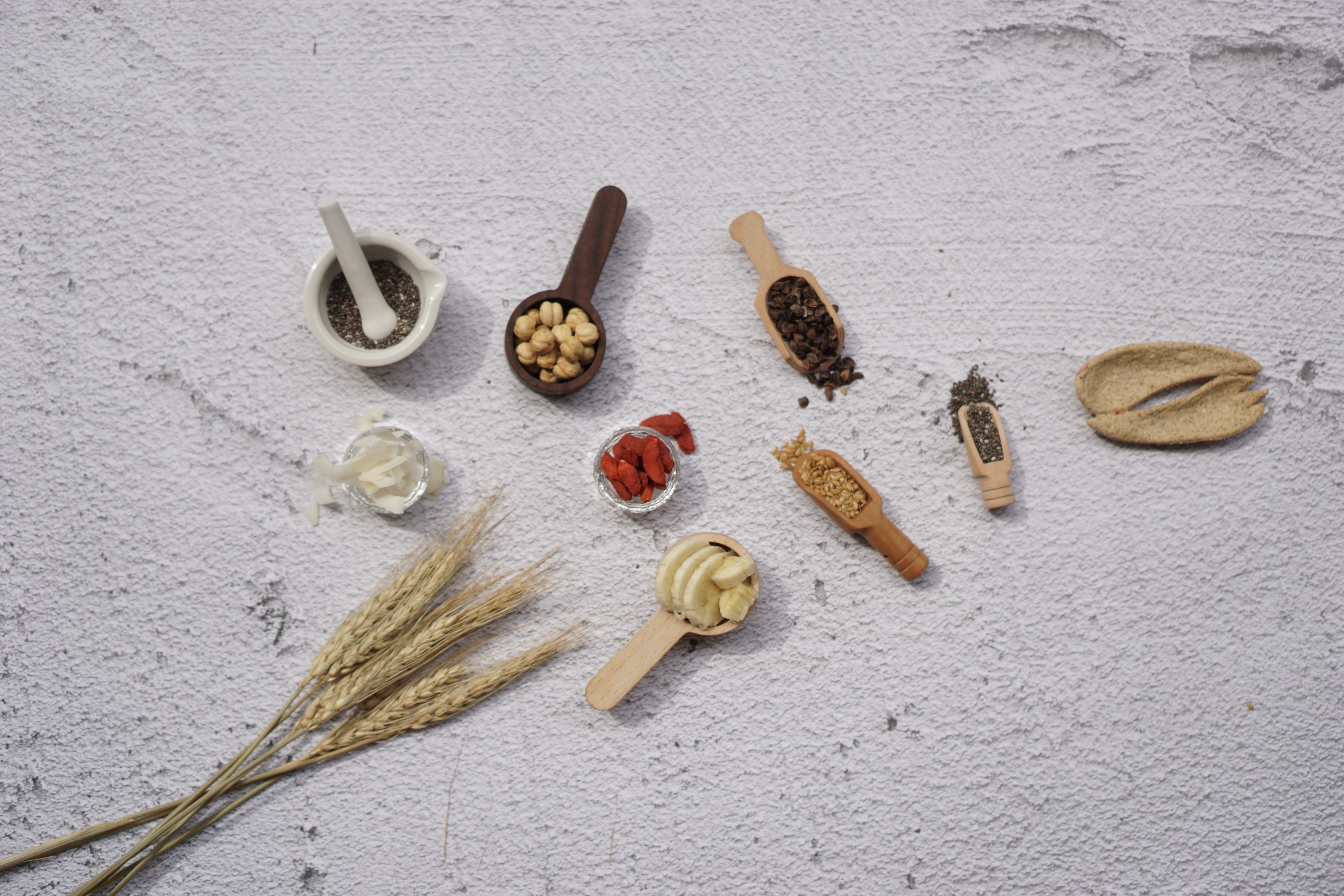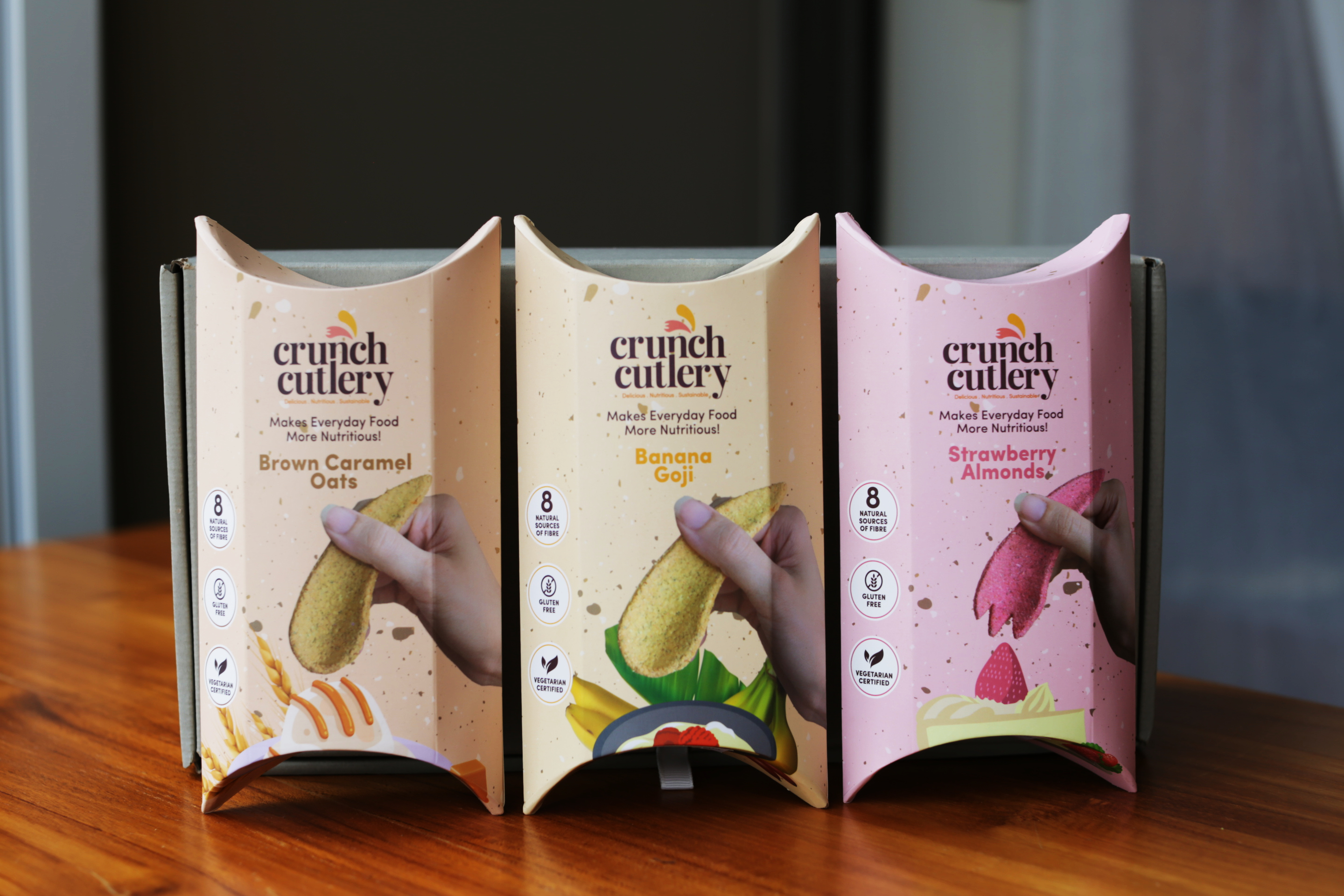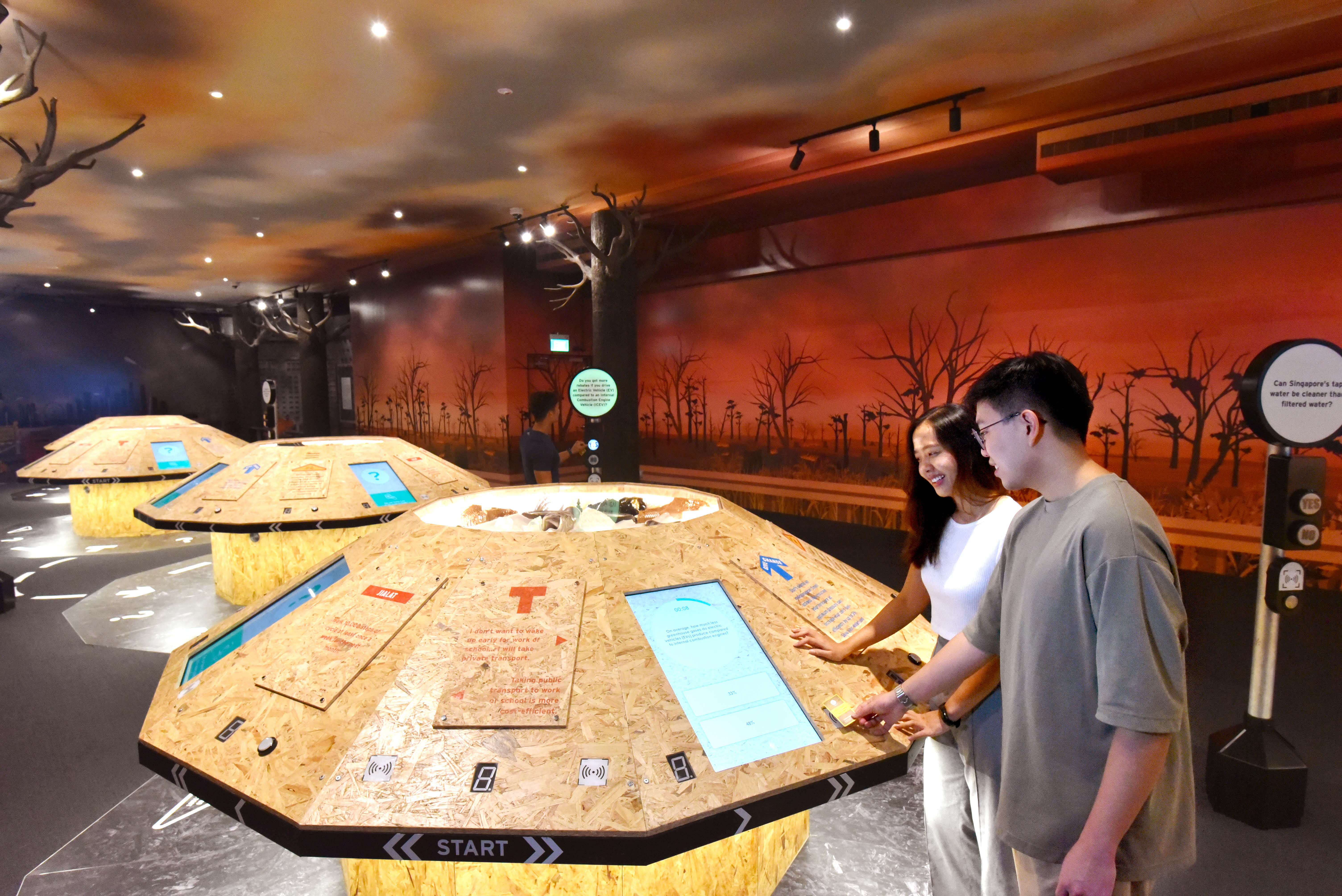Edible Cutlery: An Appetising Answer to Plastic Waste
Who said you can't play with your food? Edible cutlery from local startup Crunch Cutlery is encouraging diners to do just that, while taking a bite out of the city's waste problem.

Photo credits: Anna Lam/Crunch Cutlery
In the hustle and bustle of Singapore, convenience has become a way of life. From quick bites in shopping malls to takeaway dinners from hawker centres, the efficiency of grabbing food on the go has become something Singaporeans cannot go without.
However, this convenience comes with a hidden cost - single-use plastic cutlery. Often an afterthought, each plastic spoon, cup or even straw that we pick up with our order adds up to a huge mountain of waste that threatens the very earth we live on.
In 2020 alone, about 200,000 tonnes of domestic waste disposed of in Singapore were disposables. That’s equivalent to a whopping 400 Olympic size swimming pools or 4000 4-room HDB flats! With how quickly our waste accumulates, we risk filling up our only landfill – Semakau Landfill – by 2035.
The same plastic spoon that makes our lives easier today becomes a long-lasting environmental burden for future generations. Now the question is: how do we balance our love for convenience with the pressing need to protect the environment?
The good news is that there are plenty of creative alternatives to disposable cutlery that are way better for the environment! In fact, you might have even used some of them recently. Biodegradable utensils or plant-based plastic cutlery (PLA for short) are becoming increasingly popular. Or you might opt for that packet of wooden spoons for the minimalist aesthetics.
What if we could solve the problem of non-degradable waste by creating cutlery that can be eaten? Not only would edible cutlery be zero waste, but it might add a fun twist to disposable cutlery as edible cutlery could come in different shapes, sizes and even flavours.

Photo credits: Anna Lam/Crunch Cutlery
Love eating banana flavoured ice cream? Maybe you can opt for a banana flavoured edible cutlery for an extra crunch of banana!
Behind all the fun flavours and crunchiness, there is a team of entrepreneurs and scientists hard at work.
While such cutlery may sound space-agey or strange, there are companies in Singapore working on making dabao culture kinder to the environment. We interviewed Anna Lam, the co-founder of Crunch Cutlery, to find out more about her journey to make cutlery more sustainable in Singapore.
Crunch Cutlery, a startup that first bloomed during the COVID-19 pandemic, is the brainchild of Lam. The startup aims to address the problem of plastic waste and poor urban nutrition with a single product.

Photo credits: Anna Lam/Crunch Cutlery
When asked about why disposable cutlery is such a big issue, Lam explains that generally Singapore has a “snacking culture.” Looking at the curry puffs and bubble tea stores found in almost every shopping mall, it is hard to disagree. Furthermore, almost all snack shops use some form of single-use plastic, be it plastic straws, cups or bags.
“There isn't a means to have a reusable option. There isn't a cost-effective way to do that. So, the standard model that we use is actually disposables,” Lam explains. “While it is convenient, fast, and it's great for business, in the long run, it's just really not a sustainable solution.”
Unfortunately, it is hard to implement reusable cutleries due to the additional costs incurred and Singaporeans’ attitudes towards these policies. A study in Singapore has shown that only 37% of Singaporeans are open to a small price increase to support the phasing out of disposables. This is in contrast to 54% of Singaporeans who are willing to support these policies if there were no price increase.
Business owners who want to phase out disposables likely need to take on the additional costs themselves, making it a challenge to juggle the increased costs and profits.
However, edible cutlery comes with its own challenges as well.
“When you think about cutlery, usually people think about strength and reusability. [But] you have to reduce the strength of the cutlery if you want to make it edible,” Lam points out. It really is a bit of a paradox, isn’t it?
However, this makes sense when you think about it. If the edible cutlery is too soft, you risk cutlery breaking apart after a few scoops. If the edible cutlery is too hard, you risk breaking a few teeth when you try to eat it. There is a fine balance between strength and reusability, and that is the big challenge.
Furthermore, edible cutlery is essentially a food product. The same hygiene concerns, or expiry dates you have for any food that goes into your mouth applies for these edible cutleries as well.
How did Crunch Cutlery manage these concerns and break into this niche in our tiny island country?
Since it is impossible to create a fork or spoon that is strong enough to be used in all situations, there is a need to engineer specific edible cutlery for specific foods. Lam uses a very apt analogy of fine dining: “there is a specific cutlery for every single purpose, like an oyster knife, a dessert knife, an entree knife, an entree spoon, for example.”
Like fine dining, Lam and her team narrowed their targets down to certain niche products —artisanal ice cream, for example.
Many consumers go for cups instead of cones due to how messy eating ice cream can be, but there is just something about waffle cones that make the experience better. With edible cutlery, however, you get the best of both worlds! With a waffle cone shaped as a spoon, you can simply eat the spoon as you devour the ice cream.
However, the Crunch Cutlery team’s commitment to sustainability didn’t stop at simply making edible cutlery. Achieving zero waste involves more than just created edible products, as even these items often require packaging. To that end, Crunch Cutlery has been working with A*STAR on satellite manufacturing.
Though Crunch Cutlery saw a great start to their business, they also realised that there is a need to upscale their products further. Hence, a collaboration between Crunch Cutlery and Innovation Factory @ SIMTech was formed. Led by product designer Audrey Ng of Innovation Factory@SIMTech, the collaboration gave rise to an automated Crunch Cutlery Maker which made its debut at SIGEP Asia 2024.
“Imagine if there are edible cutlery machine makers in stores. What the operator would do is just to turn it on at the beginning of the day. It makes the cutlery like a wafer maker or an ice cream maker. All we have to deliver is just the pre-mix, because that is one of our special formulas and our trade secret,” Lam describes.
The problem of wastage is almost instantly solved.
“The stores will also know how much they need,” Lam elaborates, “[If] they need 500 or 1,000 spoons that day, they will just make that 500 or 1,000.”
By bringing the manufacturing straight to the client, Crunch Cutlery aims to not only reduce the wastage caused by packaging, but also the waste caused by unused edible cutleries.
As for her parting thoughts, Lam encourages Singaporean youth to get involved. “It's very critical for the young people to really consider a more sustainable lifestyle and it doesn't just mean that you have to follow what is already in existence, right? You can and should get creative about the solution.”
While change might not happen overnight, every small step towards sustainability counts. So, the next time you dabao your meal, consider if you can take away some eco-friendly ideas too!
Find More Food for Thought at Science Centre Singapore

Craving more environmental edutainment? Learn about the state of the climate and what daily habits you can cultivate to help the planet at the Climate Changed exhibition in Science Centre Singapore. After the interactive show and game, head to the Urban Mutations exhibition to explore urban ecosystems and how we can innovate to build sustainable cities. Tickets available at www.gevme.com/scsonlinetickets.
Written by Tan Hui Chin
Last updated: 25 October 2024

